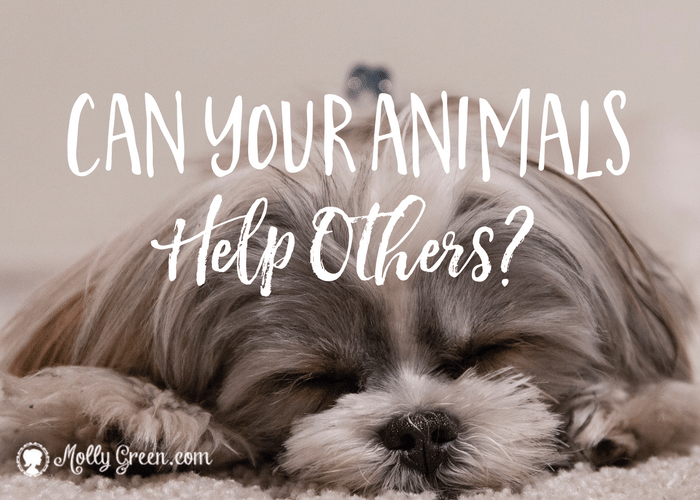
I can’t resist petting a friendly dog. Hugging a donkey? Oh, yeah, count me in. People of all ages and cultures have benefited from interactions with animals. Of course, we’re all aware of how guide dogs can assist the blind, but did you know that children with special needs or allergies, recovering trauma victims, stressed out executives, and lonely elderly people can benefit too?
And it’s not just dogs that bring us relaxation and support. Horses, donkeys, dolphins, lamas, and even rabbits are used in animal-assisted therapy programs worldwide. These animal ambassadors can help improve mental, physical, social, and emotional functioning in a variety of settings. Could your animal be one of them?
Animal Assisted Therapy
Animal assisted therapy isn’t a new idea. The first record of using animals to help people came from York, England. The Retreat, founded in 1792 by William Tuke, a Yorkshire Quaker, reshaped how patients with mental illnesses were treated. The mission was to treat them humanely and with dignity and respect. Patients were allowed to take walks on the grounds and interact with the domestic animals.
In the 1930s, Dr. Sigmund Freud allowed his beloved Chow, Jofi, to attend therapy sessions because he observed that her presence had a calming effect on his patients. The first documented use of animal therapy was during World War II, at Pawling Air Force Base in New York. Here, wounded soldiers benefited from working with horses, chickens, and cows.
A Special Bond That Heals
K9s for Warriors rescues shelter dogs and trains them to help warriors who suffer from PTSD and traumatic brain injury (TBI). Their website states: “Our goal is to empower them to return to civilian life with dignity and independence.” As of October 2016, K9s for Warriors has rescued 550 dogs and partnered them with 263 warriors.
Therapy Dog Programs
The tragic events of September 11, 2001, prompted a chaplain volunteer to bring her certified therapy dog to the Mineta San José International Airport (SJC). She hoped Orion, a Boxer/Great Dane mix, would offer comfort to travelers anxious about flying. Orion was a huge hit. Now, SJC has thirteen teams of volunteers and dogs. LAX’s terminals have the PUP (Pets Unstressing Passengers) program and the Wag Brigade, launched in December 2013, roams the terminals of San Francisco International Airport sporting vests that read, “Pet Me!” There are now twenty-seven airports that have therapy dog programs.
In addition to being certified by Therapy Dogs International (TDI), a dog is tested to determine if airport duty is a good fit. They have to be non-aggressive, obedient, and willing to be hugged and petted. A huge factor is the dog’s ability to be comfortable in a noisy and busy airport full of distractions.
Animals Offer Benefits to Kids with Autism and Seniors
Because animals are accepting, non-threatening, and non-judgmental they can help individuals who have difficulty expressing themselves to open up. Clinicians have reported that interacting with animals can offer both physical and emotional benefits to children with autism. Special programs like swimming with dolphins and horseback riding (equine therapy) may help to improve the child’s strength, coordination, and physical abilities.
Senior care facilities are also starting to recognize the benefits of having calm animals around. Animals have been shown to lower stress of the residents, improve their disposition, increase activity, and much more. If you have an animal that does very well with people, contact a senior care facility and see if they would like to have a furry visitor. Perhaps you and your children can provide some emotional and health benefits to these often-forgotten people.
My dog, Bianca, doesn’t have the temperament to be a therapy dog. She’s afraid of blenders and will bark incessantly at a plastic bag! But if you’d like to find out more about animal assisted therapy and if your furry friend can make the grade, check out Pet Partners.
Rosemarie Pagano is a nonfiction writer who loves biology. Her character, Robin Bird, can’t wait for the next assignment to uncover wonders in nature and science. Visit Robin’s website and get ready to join her on her next exciting journey: www.robinbirdexplorer.com




